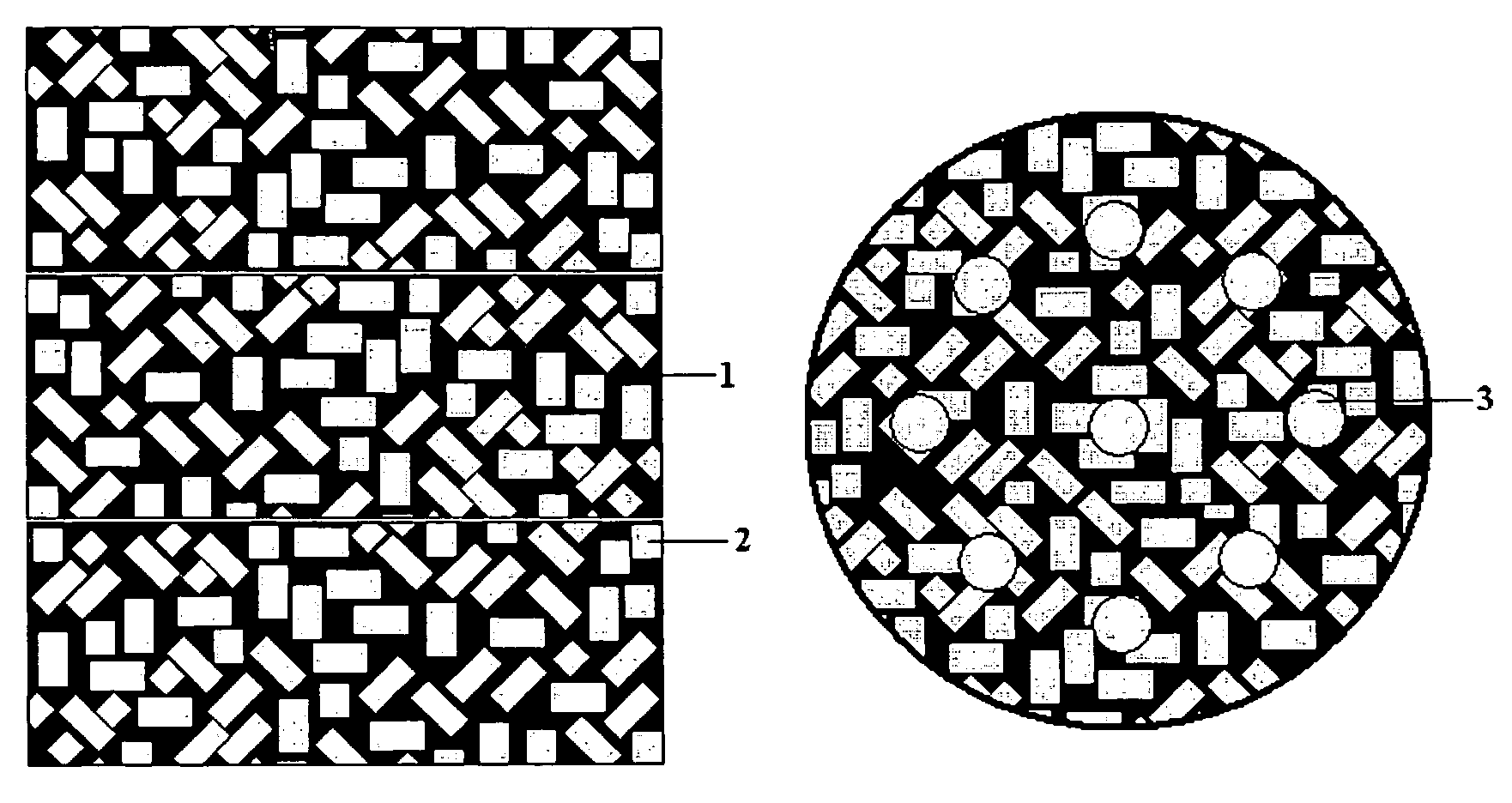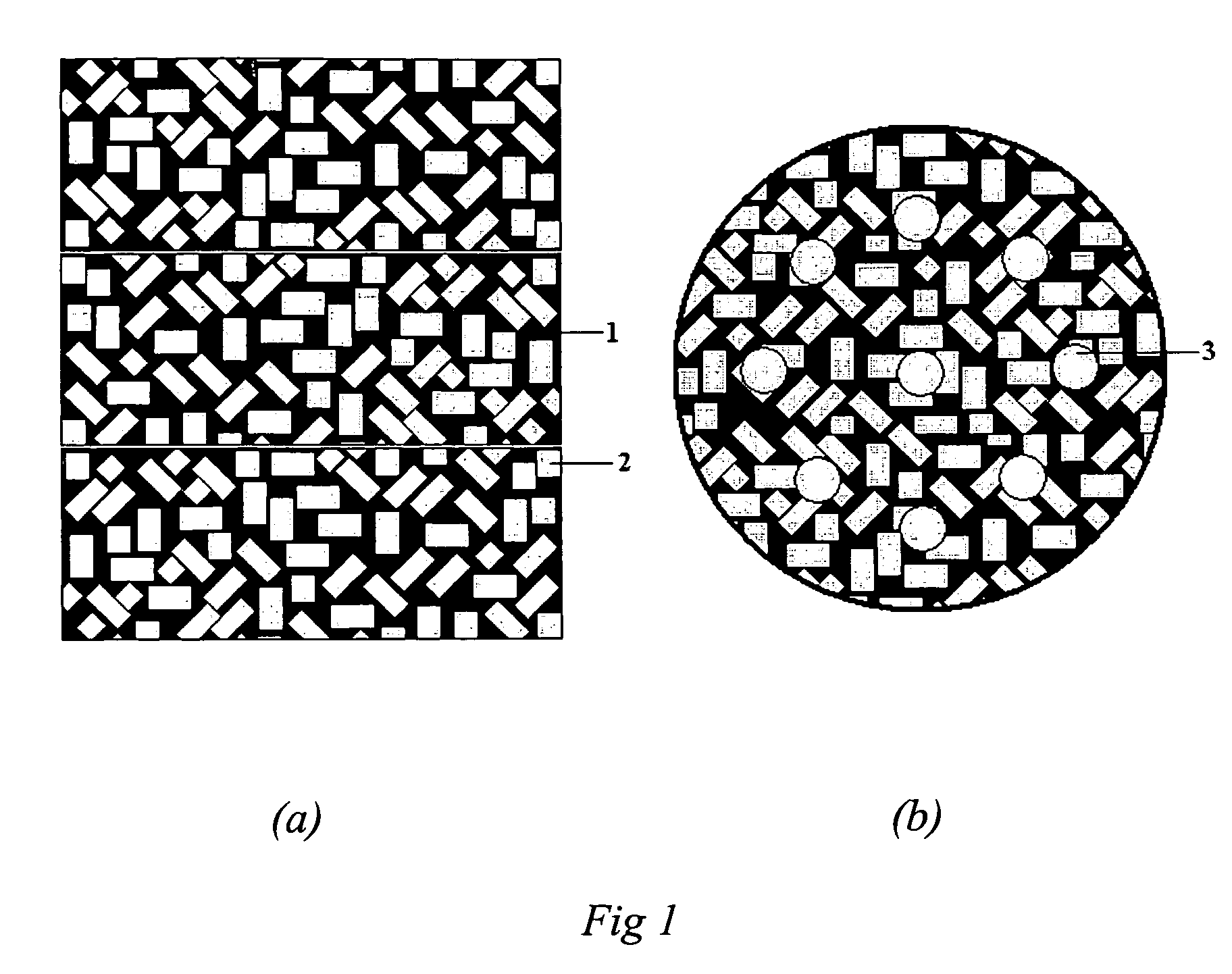Increased thermal conductivity monolithic zeolite structures
a technology of zeolite and adsorption monolithic structure, which is applied in the direction of catalyst activation/preparation, machines/engines, silicates, etc., can solve the problems of limiting the performance of a cooling system designed using zeolite absorbers, reducing water adsorption capacity, and not improving absorption capacity. significant
- Summary
- Abstract
- Description
- Claims
- Application Information
AI Technical Summary
Benefits of technology
Problems solved by technology
Method used
Image
Examples
example 1
[0028]Zeolite 13X beads were mixed with zeolite 13X powder to yield approximately 60% by mass beads. The mixed zeolites were then mixed with an equal mass of a 20% colloidal silica in water solution. Carbon nanofibers, PYROGRAF®-II, was dispersed in water with the aid of the dispersant DISPERSAYD® and ball milled for 24 hours. Approximately 10% by weight of carbon nanofibers to mass of solids was added to the suspension of zeolite and colloidal silica. This mixture was blended until it appeared to be a relatively homogeneous mixture of zeolite and carbon and then poured into a mold made from 100-mesh stainless steel screen. The molded mixture was allowed to dry overnight at 50° C. and was subsequently cured for 4 hours at 300° C. The part was a solid monolith disk after removal from the stainless steel screen mold. A stack of such monolith disks are shown in FIG. 1(a) with zeolite beads 2 dispersed within a phase of carbon nano-fibers and zeolite powder 1. The molded monolith can be...
example 2
[0029]Zeolite monolith disks 4 were placed in a subscale test system's zeolite chamber 13 schematically shown in FIG. 2. Water 6 was added to second chamber 5 that was partially evacuated and placed in a condition of isolation with the zeolite chamber 13 by closing a master valve 8 that resides in a channel between the two chambers to permit vapor transport between the two chambers. With the master valve 8 closed, the zeolite chamber 13 was heated to 300° C. under vacuum through evacuation valve 9 to dry the zeolite of all water and remove all non-condensable permanent gasses.
[0030]The test system was then sealed under vacuum by closing valve 9. The master valve 8 was then opened between the two chambers 13 and 5. The temperature of the zeolite monolith was monitored via a thermocouple 10 inserted into the zeolite chamber 13. The maximum temperature in the zeolite chamber 13 upon absorption of water was only 70° C. The temperature change was 50° C. less than that for chamber 13 pack...
PUM
| Property | Measurement | Unit |
|---|---|---|
| temperature thermal conductivity | aaaaa | aaaaa |
| temperature thermal conductivity | aaaaa | aaaaa |
| weight percent | aaaaa | aaaaa |
Abstract
Description
Claims
Application Information
 Login to View More
Login to View More - R&D
- Intellectual Property
- Life Sciences
- Materials
- Tech Scout
- Unparalleled Data Quality
- Higher Quality Content
- 60% Fewer Hallucinations
Browse by: Latest US Patents, China's latest patents, Technical Efficacy Thesaurus, Application Domain, Technology Topic, Popular Technical Reports.
© 2025 PatSnap. All rights reserved.Legal|Privacy policy|Modern Slavery Act Transparency Statement|Sitemap|About US| Contact US: help@patsnap.com



